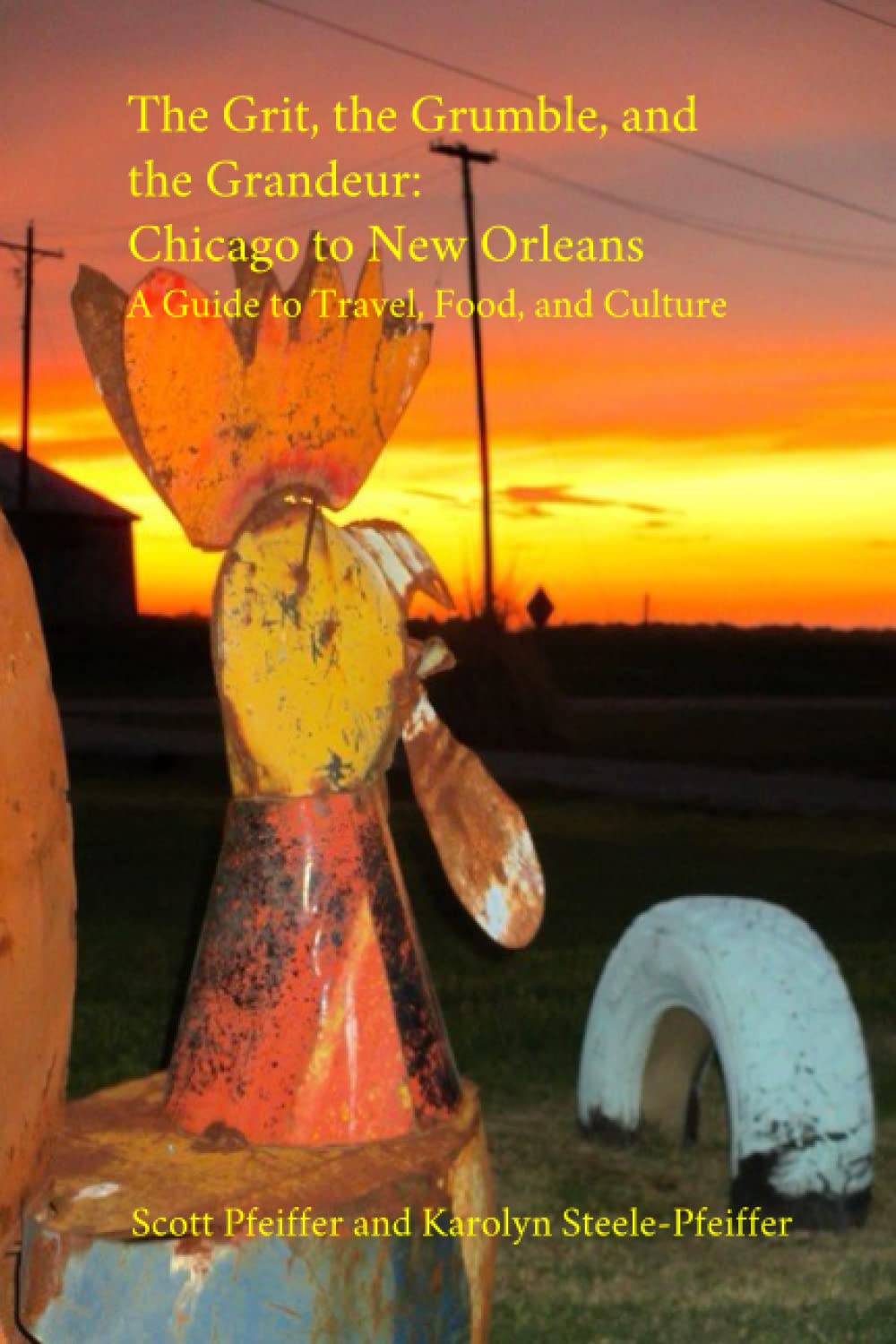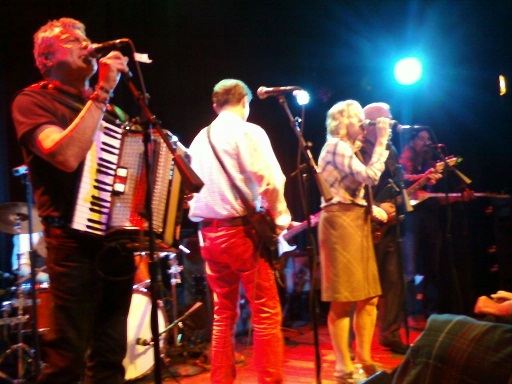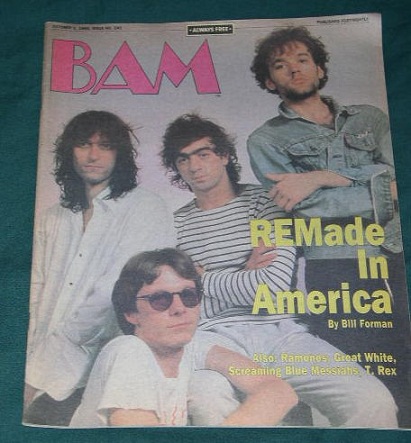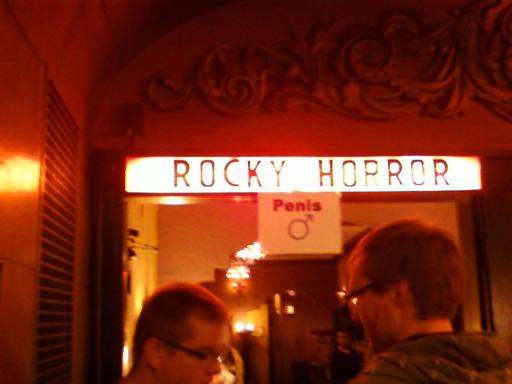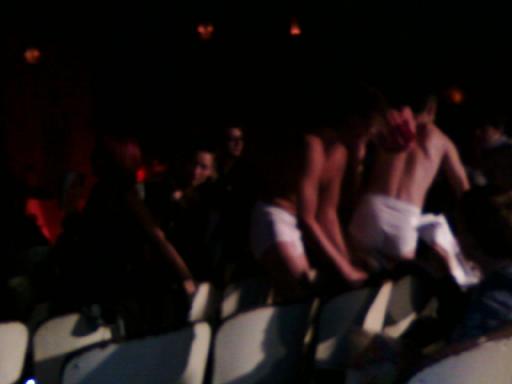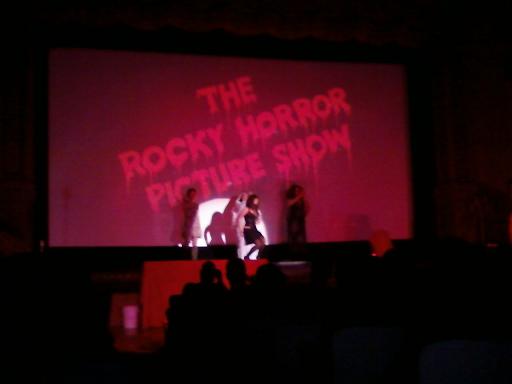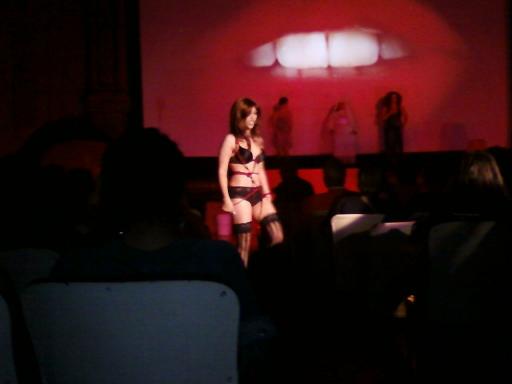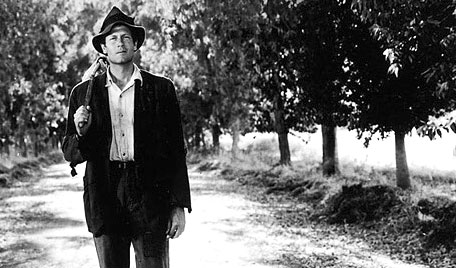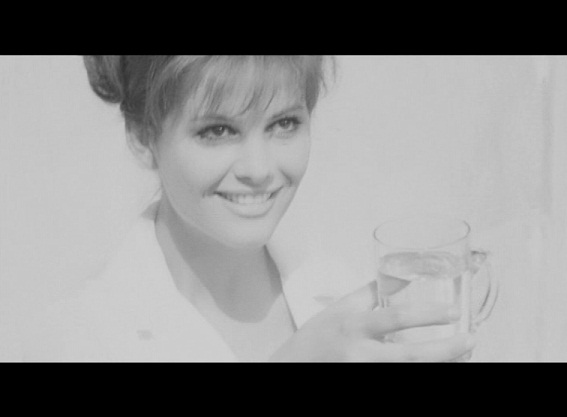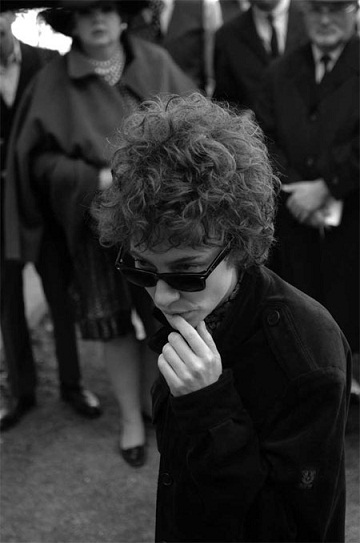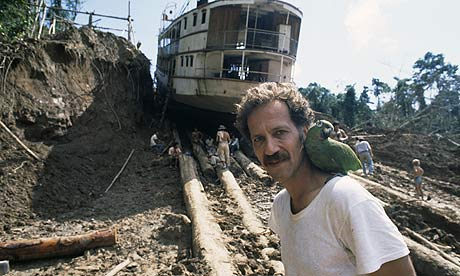Pfeiffer does Italy: A travel diary
 Friday, November 11, 2011 at 01:35PM
Friday, November 11, 2011 at 01:35PM I like to keep a journal of my travels as I go. I write in it while I eat. (It's been my experience when I do that that I'll often get free stuff--a "vin santo" here and there--or else stuff will be knocked off my bill. Presumably they think I'm a restaurant critic or a guidebook writer or something.) Anyway, here's the journal of my trip to Italy, mostly transcribed "as is". Editorial comments in brackets.
10/8/11
On the plane. This is the most ambitious trip I've ever tried to pull off. Let's see how it goes.
Ah, here come the flight attendants with the vino. Brilliant. Listening to Miles Davis Quintet Live in Europe 1967 box set on the iPod, drinking red wine. Bella! Alitalia is treating me right.
...and shading into 10/9/11
Whew! Sitting on the plane to Venice now. It's after 2:00 a.m. for me but I'm wired. Touched down in Rome; had an hour to make the connecting flight to Venice. Had to hop on a shuttle. The first time it stopped I wasn't sure if it was the right stop so I stayed on and it took me right back to where I started. Ah, it's just "back and forth", huh? I get it. Next time "forth" came around, I hopped off. Made it down an escalator only to be hit by: BAM! Another security check in. This is a zippier one, though, foregoing the shoe removal ritual. Then I had to make like OJ through what seemed like miles of airport, my gate continuously receding before me as if in a dream. Finally I made it: B5! Only to be told that the gate for Venice had been moved...to B27. Finally I get there and it appears that we are to be taken to our plane by bus. The first bus reaches full capacity right before I'm about to board.
Okay, we're off. Catch ya on the flip side, Rome! The next stage in this adventure is finding the Aliguna water bus. Let's see how that goes.
Fun to fly over Italy like this and watch the countryside unfurl.
...
Sitting here at Osteria e Bomba: had to wend my way through the maze of Venice to find it, off Strada Nova. It's down a little back alley. How does anybody find it if they're not looking for it? Having four "cicchetti" (little munchies)--scampi on the halfshell, olives, salmon and eggplant--and a carafe of prosecco! Day-leet-zee-OH-zoh! Pehr-for-VOH-ray. [Pathetic.]
I can't believe how beautiful my room at La Rezidenza is. It's overlooking a little square (campo) that's everything you would imagine a little square in Italy would be. Just the kind of place where you'd like to have a little room and live out your years. And you do feel like you're living in a palace, as [Rick] Steves says. [In fact, I should take this moment to say how much Steves' books enhance my trips. I go everywhere with his book in hand; I'm sure I look like an utter dickhead but I don't care. Never stopped me in the States. In fact, I came up with two slogans that I thought I'd have emblazoned on t-shirts: "I Stick With Rick", and another, slightly more vulgar but which I was constantly humming to myself: "Travel With Your Rick Out, Not Your Dick Out".]
Got oriented to St. Mark's Square. In a word, it's romantic. Lovers kissing on benches in the square. Old people strolling. Only Pfeiff goes to the world's most romantic places by himself. Ah well, I made sure to tell myself I love myself very much. [Christ.]
St. Mark's basilica is so ornate it almost knocked me out. It's the Byzantium influence. Just hits you with a riot of mosaic and gold leaf and sculpture and bronze horses and Eastern baubles and carvings and marble.
"Primi piatti" (first dish) is here. Spaghetti and clams!
Oh, and the water bus went perfectly. Couldn't have been easier.
Had my first gelato, strolled up Rialto Bridge.
10/10/11 Venice
Having continental breakfast at la Rezidenza. [Which, I have to say, is no patch on the English or American breakfasts..but since I usually only have cold cereal and toast for breakfast anyway, I'm not going to moan]. Scalloped wall and ceiling carvings, chandeliers, paintings. Frosted, in a word. Gazing out over the square. Bricked church, red arched tiles on roofs.
Venice, gateway to the East in the 1500s. City of masks. Much of what you see has an Islamic influence.
Okay, so the plan today is to tour the Grand Canal!
...
So, sitting here on "sandwich row" (Calle delle Rasse). Had a little sandwich, and two more little cicchetti, at Birreria Forst. Part of the culture is to stand at the counter and eat.
Took vaporretta water bus around to the train station [at the top of the Grand Canal]. Imagine if this was your morning commute. Did the Grand Canal cruise. Venice is just an embarrassment of riches in art, architecture, history.
Learned about "Venetian Gothic" [thanks, Rick Steves!] Noticed it again in the Doge's Palace: pointed arches (Gothic), round medallions stamped with four-leaf clover and Byzantine arches (tall, narrow, atop thin columns).
Okay, time to tackle the museums in St. Mark's Square.
.....
Sitting in the Doge's courtyard after touring his palace. Really bold pigeons here. One just fluttered up and bounced off my knee like it was a diving board.
The palace was so grand. It seems designed to awe, to wow, to leave even the high rollas who would come through no doubt that they were in the palace of the world's main pimp: the Doge. Again, everywhere you look there's something amazing. Oh, who did those paintings on the wall? Only Tintoretto and Veronese, that's all!
.....
Just toured St. Mark's Basilica. Gold mosaics all the way up to neck-craning domed ceilings, a floor of mosaics, marble walls. A Byzantium bonanza! The Golden Altarpiece was so beautiful with all its gems. The Treasury had cool glass relic cases [reliquaries]. Lanterns on a chalice stem. Some held skulls!
.....
Sitting here in Osteria Alla Botte. Two wooded rooms. Toured Correr Museum, a museum of Venetian history and art. I was chuffed [psyched] because I was able to find postcards of the two paintings I liked the most: a Brueghel winter scene of a little hamlet community, and a Bosch nightmare.
This "misto" seafood antipasta plate is amazing! Such fresh flavors! Clams, anchovy, shrimp, carmelized onion, calamari. The waiter just gave me a free Grappa.
That Canova relief on the way in to the Correr Museum really haunts me. A woman turning her head in distress and she seemed to be beseeching, locked in stone.
In the Doge's Palace I saw Veronese's "Venice On Her Throne" on the ceiling. It's so vertiginous.
Mmmmm. Homemade pasta with sea bass.
....
Back at the hotel. Popped on the TV getting ready for bed. Just saw a perfume commercial with Scarlett Johansen, presumably only for Italian broadcast, in which she says she does her own stunts in her movies...and her own lovemaking. Very cool. But then, there's a huge banner hanging over St. Mark's Square where's she giving a very phallic Champagne bottle a hand-job. (I've seen that ad in the U.S., actually).
Saw an endless variation on Madonnas and bambinos at the Correr. They are radical when you think about who are the objects of worship: a baby and a woman. The deepest respect not for the power men or the money men, but for a woman and a baby.
Facebook post, 10/10/11:
Absolutely thrilled to be coming at you from Venice. Two planes and a hop on a water bus and I was here. I found this little Internet cafe by chance, coming around a corner, tucked next to a little canal. Having an absolute blast: I spent today cruising the Grand Canal, then knocking about in the Doges Palace (sorry, cant find the apostrophe on this Italian keyboard, or maybe it was all the Prosecco and Grippa with dinner), then knocking about in the Doges Palace, St. Marks basilica and the Correr Museum. Man, Venice is just an absolute embarrassment of riches, every way you turn (art, architecture, history, beauty, lost tourists (including, quite happily, me). Its like at the Doges palace: oh, who did that painting on the wall? Oh, only Tintoretto, thats all! One more night and then its off to Florence. Ill try to post a few quick pictures for ya here.
10/11/11 Pauda daytrip, and back to Venice
On the highspeed train bound for Padua. The Italian countryside rolls by.
***
Sitting here in a little pizzeria/bar in Padua. Toured the sublime Scrovegni Chapel, Giotto's frescoed breakthrough. Here is the story of Mary's parents, Mary's life, and then Christ's life and death told in a way that makes it real again, with real stakes and life and death and all the human emotions: love, anger, grief. And such compassion.
Just had a Spritz: Campari with white wine.
Knocked about around Palazzo della Ragione. Underneath is quite a scene: fish mongers and butchers. Okay, full of Spritz and expresso, time to hit the basilica of St. Anthony.
...
I'm sitting around the corner from St. Anthony's tomb. Regardless of what I believe or don't believe, it was tremendously moving to watch believers carress the tomb and lean their foreheads to it, as if listening to Anthony whisper. They are expressing something from the depths of their souls here.
It's all here: the body, in all its human urges, its strength and vitality in youth, its inevitable frailty and mortality. And it's not depressing: somehow it's the furthest thing from depressing. It's sad and joyous all at once.
Standing in the cloister of St. Anthony's, the open-air courtyard where monks would stroll, and gazing up at the exterior of the basilica filling my view, I feel my eyes grow hot with tears.
"What if God was one of us? Just a slob like one of us? Just a stranger on the bus trying to make his way home". But that's the very question at the heart of Christianity, isn't it? The beautiful idea at its core: that God came in the form of one of us, a man, a man who felt all that we feel, all the human urges, subject to all the frailties, the pain. Even as an atheist this is an idea that moves me very deeply. I think of Marty Scorsese's film of "The Last Temptation of Christ", where the last temptation was to live out the life of an ordinary man, to make a home with Mary Magdalene, whom he loved, to raise a family, have an ordinary sex life...instead of all that pain. He must have wanted to so very, very badly.
(Interesting that some people consider such thoughts "sacrilegious". To me it's the very thing that makes it profound.)
Saw St. Anthony's tongue (!). They'd popped it in a reliquary case.
Caught some Padua graduation highjinks. That's where your friends make up a poster of you with embarrassing photos and text, featuring an obscene caricature of you and obscene graffitti. It all goes down in front of the University of Padua, where Copernicus and Galileo (who told the church they had it ass-backwards) went to school. They also graduated the first woman to ever hold a degree (1678).
The put the poster on the wall for all to see, where it says for 24 hours, and you have to read it aloud while wearing, say, panties and a top hat (like a guy I saw). They kick your ass: I saw one guy run the gauntlet. You're given a bottle of something strong to blunt the pain: a couple guys were so sloshed they were barely standing. A woman in panties was made to take off her stockings.
***
Writing this on the train to Venice. Bit of a screw-up: Italian for Venice is "Venezia" and I confused that with "Vicenza" and so got a ticket for that little town. Somehow my mistake struck me when I overheard an Italian man say "Vicenza" aloud. (I think he was trying to let a fellow traveler know when that stop was coming up. Oh well, got to see more Italian countryside).
Just ate an orange from the market in Padua. So juicy and tannic!
Even heard a few snatches of the song [Rick] Steves writes about. ["Dottore, dottore, dottore del buso del cul. Vaffancul, vaffancul," or, translated: "Doctor, doctor. You're just a doctor of the asshole..go fuck off, go fuck off.."] The thing is, you've got to be really, really smart to go there, so this is just a bit of "taking the piss" out of really smart people by their friends.
Had a "quattro stagioni" pizza for dinner at some random place back in Venice, though I only counted three toppings.
Facebook post, 10/11/11:
10/12/11 Venice, and on to Florence
Having a tramezzini [sandwich] at Osteria de Bacco on Calle delle Rasse (sandwich row). Went to the top of the Campanile. Stumbled upon Roger Ebert's favorite restaurant in Venice, Trattoria alla Rivetta, quite by chance on my last morning. "Arrivederci", Venice. Next stop, Florence!
***
Sitting here on the train to Florence. A nice young Italian couple from Corsenza [a southern town] across from me on their honeymoon.
The countryside is so beautiful. Verdant hills, pastel house with red-tiled roofs clustered at their foot and peppered up and down them.
Made it to Florence. Overshot my stop by one stop, but thanks to the honeymooning couple, made the transfer back right away.
Sitting here in the downstairs of Trattoria Marione, having a prusciotto and mozzarello plate. Absolutely the freshest mozzarrella I ever had. Followed that up with penne pasta with meat sauce. In Italy, pasta is just the first course. For "secondi," I had lamb with fried potatoes. Delizioso!
A huge Italian party on my right, Americans and Aussies on my left.
10/13/11 Florence
Sitting here at Pensione Ottivani, having breakfast. The plan is to hit the Uffizi Gallery today.
At breakfast a friendly man with a gregarious Vietnamese tour group asked me if I would take one of the women's confession, because I look like a priest. It must be the aura of austere reflection I exude. Sure, I replied, but I'm not even Catholic. We all had a good laugh.
***
In the courtyard of the Uffizi Gallery. Funny how when you travel alone everyone thinks you're the go-to photographer. I'm getting to be quite accomplished, if I do say so, at getting both the couple and the scenery in the frame.
Just spent hours having visions at the Uffizi gallery. It strikes my how everyone is doing their take on a handful of iconographic scenes or stories or allegories: it's either classical iconography or mythological subjects or bible scenes: the Slaughter of the Innocents; the Annunciation (Mary and a female angel); Mary, bambino and Anne; Judith decapitating Holefornes; Salome and the decapitated head of St. John; "ecce homo"; "pieta"; "depisizione"; St. Sebastian and the arrows. The most striking painting for me was Botticelli's "Spring". Also fascinating to see Giotto's altarpiece after seeing his Scrovegni Chapel in Padua.
There was a room where they were showing clips from movies shot at the Uffizi. Must remember to check out "The Stendahl Syndrome" by Argento.
***
Having lunch at Gusto Leo. There's a Pfeiffer doppelganger sitting across from me: high-foreheaded, receding hairline, bespectacled, alone.
Facebook post, 10/13/11:
10/14/11 Florence
Standing here with the warm sun on my back in the Bardini Gardens of the Pitti Palace, savoring a gorgeous view of Florence. Nice cool breeze, pleasurable contrast, just right to cut the warm sun. Feels good to be outside. The Pitti Palace was just so mind-blowingly beautiful that you almost had to laugh. This was the Medici dukes' palace, Florence's equivalent of Versailles. I was especially struck by the dukes' apartments, so lavishly, colorfully appointed.
The Pitti Palace has one roomful after anoher of Titian, Veronese, Raphael and Rubens.
***
Sitting here at Trattoria Burrasca off of Mercato Centrale. Having boiled eggs and anchovies, linguini with grouper fish for primi piatti, and grilled slice of beef for secondi. A real hodgepodge.
Walked through the Duomo Museum. Fascinating. I learned that the "annunciation" is depicted in statues on either side of the Duomo's entrance [the annunciation is the one where the angel appears to Mary and tells her that she will give birth to the Christ] and that when you pass through the door you're meant to be passing through the space where "the word became flesh".
Saw Michelangelo's "Pieta" sculpture.
It occurs to me that while everyone in Italy eats and drinks to their heart's content, I haven't seen any fatties, no do I reckon their is such a thing as "alcoholism" here. Could it be that the culture is doing something right, healthy?
In both the Palatine Gallery of the Pitti Palace and the Duomo Museum I saw views of Santa Reparata, the patron saint of Florence, getting her nipples tortured with pliers. In the Pitti Palace I was struck by Titian's "Magdalena". What a set of [here I express an enthusiasm for Mary Magdalene's breasts in terms that I really can't bring myself to reprint here. Jesus, Pfeiffer]!
10/15/11 Florence
Okay, so the plan today is to hit Michelangelo's square (Piazzale Michelangelo), then hit Mercato Centrale for lunch, then have a look inside Santa Maria Novella, the church around the corner from where I'm staying. I'm off!
***
Another gorgeous Florence view from the Michelangelo Square. In a little wine shop at the moment: just sampled an IGT anda DOGC. [DOGC is the highest category, identifiable by a pink or green label; IGT designates a vintner's special creation].
***
Taking a little break on the steps of the Piazza S.S. Annunziati. The sun feels good shining right down upon me. This is the first Renaissance square in Florence.
So "da portar via" is "for the road". [Every now and then I'd consult the glossary in the back of the Steves guidebook, trying to get down a few basic phrases].
Santa Maria Novella was closed, so I popped over to the train station and grabbed my Vernazza tickets.
***
Florence is a sensory experience for all the senses. I've just walked into the palatial perfumery [perfume store] and a lovely aroma filled even my stuffed-up nose. [I was fighting the onset of a cold.] I stopped in a back room and looked out a window into the frescoed cloisters of Santa Maria Novella. This was once the herb garden for the monks.
Now I've stumbled on the most extraordinary little vaulted, frescoed room. I reckon it must have been the monk's library. Each wall has a three-shelved stand displaying books of the coffee-table type, with little reading lamps affixed to the lectern-like top shelf. They're not for sale, they're just there for you to read. I found a book of paintings of naked women ("L'Eternal Feminin") and sat on a round seating island in the middle, resting my back against the conical backrest. Nice break from noisy, zippy Vespas and "tired [tourist] hubbies", in Steves' memorable phrase. Wow! Here's an extraordinary painting [of a naked woman]: "Madeleine dans la grotte", 1876. Jules Joseph Lefebre, in a volume called "Histoire du Corps", Alain Corbin.
***
Eating at Trattoria al Trebbio. Having a half-bottle of DOGC, Chianti Classico Geografico. It's got the pink label. They opened the bottle right at my table. These Florentine trattorias are so cozy. There's American movie posters on the wall. "Sabrina", a Bogie picture I haven't seen. Tuscan cuisine isn't fancy, it's real simple: meat-and-potatoes, but fresh, flavorful, filling. [The freshness of the food is one thing I've most missed since being back in the States. It makes all the difference]. Whew! I think I'm going to burst a button.
10/16/11 (Sunday) Florence
Sitting here with the hot sun beating down on me in Piazza S.S. Annunziata. I'm going to burn this cold off. Just finished a huge, crunchy-bread, 3.50 euro sandwich from the Mercato. Great tip from Steves.
So, the Accademia. I stood to the side and looked into David's eyes. Here was Renaissance man ready to take 'em as they come, to take on the bullying, brutish Goliaths in whatever form. These are eyes that see their opponent steadily and see him whole. Here was the optimism, the humanism of the Renaissance: man can take on anything. Michelangelo makes you see and feel the weight of that huge hanging nut-sack. (Speaking of which, an observation: no one in Italy seems to neuter their dogs. The amount of dangling nuts I've seen on receding dogs has been really something. Cultural difference, I guess. I remember when I was a kid everyone said it was cruel not to cut your dog's balls off. I could never quite be convinced that the opposite wasn't more true. )
The shelves of Bartolini busts--men, women, children--were uncanny and a bit spooky. You gaze into their faces, so realistic. All once real, living people.
One thing about "David": he seems to put a big smile on all the ladies' faces. I observed two eldery women giggling like schoolgirls. One woman began to cry "Oh my God...Oh my God...Oh my God" as she entered the hall. (I could hear her from all the way from the other side). Even my own mother has confided in me that David is her idea of a buff good thing. Not sure what my dad thinks about that.
Saw a painting by Irene Duclos Parenti, the sole woman to have a painting in the Accademia.
Also saw a painting of Zenobia: "ancient queen, fearless warrior, strong, virtuous, beautiful woman". Whoa!
Saw a lot of paintings worshipping the man who pioneered the hippie look (and a socialist to boot): Jesus. If I were an alien come down to earth observing human behavior (some right now are saying, what, you're not?), I'd come to the conclusion based on strolling the world's great art museums that this was a race that worshipped a hippie. Does it not cause rightist Christers any cognitive dissonance to worship images of a fella they'd probably dismiss as a bongo-beating hippie if his Birkenstocks actually crossed their paths in real life?
I looked at Michelangelo's unfinished "slaves" or "prisoners". I saw two completed ones in the Louvre two years ago. The unfinished ones are kind of cool: you can just see a figure beginning to emerge from the stone, as if they're attempting to break out. Again, the theme of the slaves is the same as that of David: it's all about breaking free, it's man throwing off the chains that bind him.
Just got bombed by some pigeon shit! A nice old Italian lady who helped me clean off told me it was "good luck".
Florence has been a singular place. Imagine Manhattan and the 1400s (and way earlier) all intermixed. It's got the stressful noise and intensity of a big city (all those noisy, Kamikaze Vespas in the very streets Michelangelo trod), yet around every corner you come upon treasures of architecture, art, sculpture (a lot of it right out in the open air) and scenery.
A good example: I popped into the church around the corner from where I'm staying, Santa Maria Novella. Painting by Michelangelo, crucifix by Giotto, the most exquisitely gold-trimmed, frescoed, vaulted side chapels, stained-glass windows and decorations.
***
Sitting here at Trattoria Nella. Always a good mix of locals and tourists in the places Steves recommends. I've never seen a place recommended by Steves that the local weren't into as well. Good sign. Having the ravioli with walnut sauce, a local favorite.
Okay, about to try tripe for the first time. A Tuscan tradition. Whew! Piping hot.
Boy, the guy who runs this place is really gregarious! He loves the ladies.
The waitress just gave me the Italian word for when you scrape up the last of the food with your bread: "scarpetta". "Little shoes".
I must be drinking a lot of Sangiovese. I reckon that's what most "vino della casa" (house wine) is made of around here.
Just had a free ("gratis") vin santo (Italian desert wine). [I asked the cute waitress how to spell "vin santo" and she took my pen: at this point in my journal I have those words in her handwriting].
Hey, the couple checking out in front of me is from Chicago.
What a great dinner with which to wrap up my stay. That was my favorte trattoria so far. So friendly. As I left the owner had pulled out a guitar and was preparing to sing a few songs.
Facebook post, 10/16/11:
10/17/11 (Monday) Pisa and the Cinque Terre
The next leg of the adventure begins. I'm on the train bound for Pisa, and then on to Monterosso and then on to Vernazza. Listening to Nick Cave as the Italian countryside rolls by.
***
Sitting here in Trattoria del Capitano. Just had an antipasta plate of "acciughe" [anchovies], the local specialty. Not like any anchovies I've ever had. Zingy! This place [the Cinque Terre, five little towns on the Italian Riviera] is so gorgeous I don't think I'll ever leave.
***
Sitting here in the Blue Marlin [bar]. Some kind of Italian house music.
10/18/11 (Tuesday) Cinque Terre
Jump cut. Here at the Blue Marlin again for breakfast. Eggs and veggies with sausage plus focaccia. It's market day in Vernazza and vendors are setting up flowers. The plain today is to do a bit of hiking.
So "farinata" is the fried bread snack made of chickpea meal I had. [I bought a slice of this from a pizza stand I dropped in on on an off hour when they didn't have any pizza ready].
Is "the Blue Marlin" from Hemingway? [Yes, Pfeiffer: "The Old Man and the Sea".]
Mmm. This cappucino is how it's supposed to be done.
American women have nothing on their Italian sisters when it comes to verbal facility. I was having a gelato at a little place run by two nice young women. A friend of theirs came by, a young woman with bambino. They took a break and come out from around the counter and sat next to me on the little bench on the porch, which becomes a little bridge looking over an archway onto the water. As she bounced the bambino, the young woman expressed herself to her friends in an unceasing, rapidly flowing stream of lovely, mile-a-minute Italian, sustained for minutes and minutes on end, never even stopping to draw a breath. It became comical, at least to my ears. When she did finally pause for an instant I thought of timing her, but she was off before I had a chance. The bambino was cute.
This town [Vernazza] really closes down at about 10:00 p.m. I came out of dinner on my first night and it was really kind of spooky. The town square was still, all the shutters drawn, not a sould in sight. I wandered up the little main street to the Blue Marlin, where I'd heard the nighttime action might be. I met a young American couple in their 20s from New York. The woman was of Lithuanian descent but she had perfrect Italian pronunciation. The fella bought me a Campari Spritz and I bought them a Negroni; she kept correcting our efforts to pronounce the Italian drinks.
Even the Blue Marlin rolled up the carpet pretty early. They gave us our drinks in plastic cups, handed us our hats and sent us on our way. I've found that Europe generally shuts down much earler than the States. I have a theory about that: maybe it's that "23 hour" just sounds and feels much later, than, you know, 11. [Brilliant.]
We walked down to the harbor square. Standing in the ghost-town-like square, still, shutters closed, nursing our drinks after my new friend's girlfriend went home (she began to exhibit signs of being fed up pretty quickly after making Pfeiffer's acquaintance, an effect that my society tends to have on women) [maybe that's because you're a goon, did you ever think of that? Anyway, give her a break: she was tired]. Suddenly three crazy young women appeared, stumbling into the square and laughing. In a London accent, their leader told us that she was from Chicago. The cognitive dissonance her remark caused me cleared up when she explained she was in fact originally from London. She told us that they were planning to grab a cab to the next town up the line. (The Cinque Terre is five little towns in a row). Did we want to come along?
I was skeptical of the cab idea: did they think they were in Manhattan? My friend said he had to admit that he had a girlfriend. "No, not like that, just a night out," said the English girl. "Go wake her up and bring her. We'll meet by the train station in 15 minutes." We agreed to the plan. Meanwhile, her friends had disappeared, leaving her talking to us. "You CUNTS!!" she shrieked and rushed off.
My friend went away, presumably to go wake up his girlfriend. I went upstairs to drop off my bag (and--yikes!--my Rick Steves book) and then made it up the deserted main street to the train station. There was a little playground nearby and I rode the merry-go-round in the dark. I didn't see any signs of anyone. As I was walking home I ran into the bartender from the Blue Marlin locking up, who I happened to know was an American ex-pat from California (he met a girl here and never left). Is there even such a thing as a cab around here, I asked? There is, he said, but he'll start charging you from the town he leaves from, then keep charging until he gets you to where you're going. You'd be looking at 150 euros at least, he said. Forget it, I thought. Right, I'm off to bed.
***
Made it over to Corniglia. Definitely a hike to get the heart rate up. Hiking through the terraced vineyards was pretty magical. Writing this having lunch at the restaurant upstairs at Enoteca Il Pirun. Two American old ladies are having the time of their lives downstairs, pouring red wine directly into their mouths from some kind of long-spout, needle-mouth decanter called a "pirun". The music has a bit of the vibe of an Italian Tom Waits, circa 1975.
***
Sitting here eating octopus with potatoes at Trattoria Gianni. Now having pasta with pesto. I wonder if this is that "trofie" (flour and potato pasta, made for pesto to cling)?
I'll have to tell mother that hiking the Cinque Terre is the ultimate hike for her hiking group.
Lots of sleepy flies in Cinque Terre.
Now I'm having the Ligurian seafood mix. Presumably they pull it right out of the Ligurian sea today. Washing it all down with a 1/2 liter of white "vino della casa" (house wine) every night, about a half bottle.
20 years of doing the Stairmaster three times a week has served me well on this trip.
Impressions of the hike: Looking down at the coast of the Riviera and out over the Ligurian sea, all the different textures of the flora and fauna on the hillsides, cacti, lemon trees, vineyards, and the pastels of a little town perched on an aerie or cliffside or tucked in a little harbor by the sea.
Ran into the women from last night on the main drag today. Then, when I was beginning my ascent for my hike to Corniglia, I spotted them below me on the train platform and I waved. Their leader waved back, and I was happy.
Then, crazily, much later in the afternoon, when I took the train to Riomaggiore after finding the trail to Manorola closed, I looked through the door to the next car and there they were again! What are the chances? When we disembarked I stood and waited for them, but this time they just hurried past. [Well, what d'ya expect? Some 40-year-old fucking old lech, constantly turning up like a dark cloud or a bad conscience or something...they probably thought you were a stalker].
Why couldn't I have just seen them that once on the platform? If it had ended there then I could have been happy. [Jesus.]
***
Sitting outside having a Campari Spritz at the outdoor tables in front of the Blue Marlin. It's all Italians here now.
10/19/11 (Wednesday) Cinque Terre
Sitting here at Il Pirata on the upper street above Vernazza. Had a delicious cream-filled Sicilian pastry. Was this the "millefeuille"?
Boy, all the varied strata, the terraced mountains jutting up out of the sea, the moutainsides a waterfall of green, trees and vineyards, pastel homes clinging to the sides, castles and forts perched atop cliffs, sheer rock faces dropping right to the sea. This blue ink script is written from the watchtower of the castle overlooking Vernazza. [The effect is kind of lost electronically.]
Sun and blue skies are wrestling with overcast clouds. Absolutely gorgeous where the sun breaks through a blue patch, the sun hitting the backs of the clouds making the edges glow, bathing the water and mountainsides in diffuse light, causing the sea to shine. Even overcast days are beautiful here, blue-grey as far as the eye can see.
Tourists knockin' about on rocky breakwater just got splashed by massive wave.
***
Whew! Made the hike from Vernazza to Monterosso. Took about two hours up and down the mountainsides. Sitting here in Pizzeria la Smorfia. The place is jam-packed with Italian teenagers. They look about as Italian as you can get. [What does that mean, Pfeiffer? I guess I was thinking of close-ups from Pasolini films when I said this.]
It was pissing down rain so I made it over to Ristorante Incadase da Piva. I had the tegame alla Vernazza (anchovies, tomatoes, potatoes). I think that was the most flavorful spinach side I've ever had. I just met Piva, the town troubador. Hey, the people across from me just mentioned "scarpetti" (scraping up the sauce with bread). This was a nice way to end my stay. Cozy place to hide out from the storm.
10/20/11 (Thursday) Cinque Terra and on to Lucca
Sitting here at Blue Marlin on my last morning in Vernazza. There's the Blue Marlin white fur-ball [a reference to the little pup that was always knockin' about in there]. Seeing a lot of the same faces. Saw the Dylan guy again [this fella who, at least from afar, was Bob Dylan circa 1966--I kept seeing him around town], happened to trail him while walking a back street (carugi) until he turned in to the building where he lives or works. It's a real little community here: you see the guy in the morning you saw at the Blue Marlin the night before. Or the guy who served you dinner might be at the Blue Marlin later that night.
***
Writing this from little Pizzeria Felice in Lucca. Delicious pizza. I was able to make reservations for Trattoria da Leo, the restaurant where the picture was taken that first made me want to come to Italy. Spread over two broadsheet pages, the picture showed a spread at da Leo, a table absolutely groaning with Italian food and wine. I've had it on my wall like a poster for years.
***
Sitting here in Trattoria da Leo. The local across from me is cracking me up. He's the real deal. The staff pats this old fella on the back and banters with him. This place was the mecca for the whole pilgrimage, and I did it. I'm here!
Whew! That was the biggest steak I've ever eaten. The old local fella across the way from me just fell asleep. The owner (presumably), who looks a bit like De Niro as Scorsese as the devil at the end of "Angel Heart", came out and messed with him. Had the tortelli al Ragi di carne, the special local ravioli, a plate of which was in the picture.
So great to be sitting under the carvings I'd seen in the picture.
The owner just popped in with a bullhorn and holla'd something in Italian.
10/21/11 (Friday) Lucca to Pisa to Siena
The next leg of the adventure begins! I'm on the bus to Pisa.
***
Lying on the grass on the lawn in the Field of Miracles in the warm sun, gazing up at the Baptisery. Here in the land of Galileo.
***
I'm looking at a mural of Galileo at the train station. Train strike! Italy is more of a class society than ours. Very cool, except my comrades in the working class are cramping my campaign of eating and drinking my way around Italy. I'd like to think it's a fiery salvo in the class war but it think it's more like, "Hey, 3-day weekend!" [Not so, Pfeiff, because they resumed work at 5:00 after they'd made their point, didn't they?]
Walking the wall around Lucca was one of my favorite experiences of the entire trip, and Lucca was one of my favorite stops. The word I'd use to describe it compared to big Italian cities is "softer", more feminine. This makes sense, since the town was largely shaped by Napoleon's widow, Mary Louise. Even when spoken aloud aloud by Italians the word has a gentle lilt. "Lucca".
A thrill to see the Leaning Tower in person, even if it is touristy. Interesting again to see the Eastern, Muslim influence on Italian churches built in the 12th and 13th centuries. The mosaics on the Pisa duomo. Italy traded and crusaded with the Muslim world. [I love that level of historical insight. That's PhD level material, that is.]
Also the bus ride from Lucca to Pisa through the Tuscan countryside was one of my favorite parts of the trip. The vineyards, the Apennine moutains, those trees. I've never quite seen trees like that, that shape or color.
Made it over to Locando Garibaldi in Siena, around the corner from Il Campo. I'm being served by a kindly old gentleman. This was my most exhausting day of travel yet. There were times when it seemed like I wasn't gonna make it. But again I have to hand it to myself: Pfeiffer, you did it!
I love how as I was leaving the family was just sitting down to their dinner.
Hmm, so the Byzantines were Christians. [Yes, Pfeiffer: Constantinople was the capitol of the Eastern branch of the Roman empire. Ever hear of Constantine? Legalized Christianity, circa 300 AD?] Constantinople was looted for its treasures, now in the treasury at St. Mark's in Venice. There were all sorts of links between Italy's great powers (Venice, Pisa) and Byzantium and the East. Recall the Russian icons in the Accademia: the Byzantine roots of medieval Christian art.
Fun to visit these cities that at one time were great world powers and rivals. Florence and Pisa. Also fun to see an artist's work in one city (Giotto's frescoed Scrovegni Chapel in Padua and then his bell tower in Florence, Ghiberti's doors at the Baptisery in Florence and looking forward to seeing his baptismal font at the Baptisery here.
10/22/11 (Saturday) Siena
Nice breakfast spread here at the Domus [my hotel].
The first time you see the great monuments of Europe, the first time they swim into your ken, they just almost bowl you over, make your whole body sing. It was like that for me the first time I came through an arch and saw Il Campo. Then after you've been in a place a day or two, it's funny how quickly you start seeing it all as the locals do, as just part of the backdrop to their environment.
This black ink is written from a stool on the little balcony overlooking Il Campo off of Bar Paninoteca San Paolo [again, you lose the effect on the blog. I'd switched from blue to black ink]. Sun beating down. This is the good life. Nine pie-shaped wedges below. [A reference to the nine sections of brick of Il Campo, representing the nine major playas who ruled medieval Siena]. It's so nice here I don't want to leave.
***
Sitting gazing on the facade of the Duomo. What sumptious, colorful buildings are European churches. Filled with priceless treasures of art. Had a look in the Duomo Museum and was able to come face to face with the Pisano sculptures that once stood on the facade of the church. What an amazing day I've had, looking through the museum in City Hall (ground zero for the start of secular government), the Duomo, where I saw Bernini's chapel (and his Mary Magdalene sculpture: I've got the hots for her) and the Piccolomini Library (a.k.a Pope Pius II, often called "the first humanist"), where I saw a statue of the Three Graces. I want to [here I express a desire to "know" the Three Graces in crass terms which I really can't bring myself to reprint. Unbelievable!] the Three Graces! Donatello's sculpture of John the Baptist, and Michelangelo's sculpture of St. Paul on the Piccolomini Altar.
***
Even this joint [the restaurant where I ate that night] right on touristy Il Campo is full of locals. A family with wild, running, jumping children, a friendly waitress.
10/23/11 (Sunday) Siena
Okay, the plan today is to go to the top of the tower.
***
Writing this while sitting on the bricks of Il Campo. Kids love running and charging all over the square.
Every now and then you'll hear some kind of rousing chant or anthem erupt from some not-quite definable point. I wonder if these are the neighborhood fight songs? [Siena is divided into 17 neighborhoods, or "contrade", that compete in the annual Palio horse race: three breakneck laps around Il Campo.]
Just came down from the tower. What a magical view. Europe is like some kind of enchanted fantasy land to me. But the people live in the modern world. Tried to imagine myself as a pilgrim in medieval times, coming into town, or maybe venturing out beyond the walls, into the countryside, maybe on my way to Rome. Saw one neighborhood contingent parade into the square, drumming and parading their colors. I wonder if this is the hood that won last year's race?
***
Sitting here at Trattoria La Torre. I love how you can see the cook start to make your order as you place it. Off to Roma in the morning. I've really loved Siena. Hope to get back here soon.
That Milo Manara exhibit really knocked me out. Manara, collaborator of Fellini and Jodorowsky. All those naked women, plus mythology, history, history of art, literature. Fellini had an idea for a film: Mastroianni in Mexico looking for Casteneda. Imagine if he'd filled it.
The cook is feeding herself during a slow moment. This joint is the real deal. No menu, the owner just reels off a list of dishes.
Knocked about in the Baptisery today, looking at Donatello sculpture (angels) and Ghiberti bronze panels. Knocked about on the Panorama del Facciatone, the walkway above the Duomo museum. Looked around in Santa Maria della Scalla museum (the old hospital), saw some Etruscan stuff in the subterranean archealogical museum. Saw Pellegrinaio Hall, with its frescoes of pre-Renaissance healthcare and showing the results of justice, knowledge and good government in Siena. Everyone's singing and dancing and working hard and loving it. In the frescoe presided over by a pointed-eared devil, there's crime, murder in the streets. The Renaissance message: that a republic must not be ruled by a tyrant. Chicago, take note!
Facebook post, 10/23/11:
Pfeiffer here, coming at you from beautiful Siena, Italy. I know it's been a minute since I rapped at ya, and I've discovered two of my favorite towns since I wrote you last, Siena and Lucca, but things did get wild for a sec. I have to say that I'm officially a complete badass when it comes to getting around this country. Even a nationwide train strike when I was trying to get from Pisa to Sie...na could only slow Pfeiffer down, not stop him. In practice a train strike in Europe just means that a train will lumber down the track sooner or later, you just never know when (I've never toured Europe and not encountered a train strike sooner or later). I saluted my working-class brothers and sisters for the fiery salvo in the ongoing class war, while at the same time I couldn't help cursing them a bit for putting a cramp in Pfeiffer's style. By dint of two trains, lots of waiting around, a bus, one near miss where I only made my train by chasing after some Italian teenagers I'd met on the platform when their friends hollered at them out the window of the train we wanted from another platform) and a lot of walking my ass while lugging my luggage around, I made it to Siena. And beat as I was, I still roused myself to go out walking, and I even found the restaurant I was looking for. I rock SO hard.
Like I say, Lucca was one of my favorite stops. It's a little walled city. Walking on top of the wall, doing a lap around the perimeter of the entire city, was one of my favorite experiences of the trip. Compared to other big Italian cities, the word I'd use to describe it is 'softer'. Also it has the most beautiful women I've seen yet.
I was also able to eat at the restaurant in Lucca that in a way inspired the whole trip: Da Leo. It was a picture taken inside this restaurant, showing a spread at da Leo, a table absolutley groaning with Italian food and wine and covering two broadsheet pages in the Times, that was always sort of the inspiration for the trip. I've had it as a poster on my wall for years. This was my idea of "the festive board". It was fun to eat at my "mecca", under the wood carvings I'd seen in the picture. I had the local ravioli that I'd seen in the picture, as well as the most monstrous, sumptious steak I've ever eaten. (I'll try to pop up a picture here.)
The bus ride from Lucca to Pisa was also one of my favorite experiences. The picturesque pastel, red-tiled roof houses, the trees of a shape and color I've never seen before, the Apennine Mountains in the distance. And it was a thrill to see the leaning tower and the field of miracles in person, touristy as they may be.
I really love Siena too. When you first see the great monuments in Europe, the first time they swim into your ken, your whole body sings. It was like that for me when I first came through an arch and saw Il Campo, the majestic square here, like a great amphitheatre fanning out from the grand, medieval City Hall and its towering tower. (Then, after you've been here for a day or two, it's funny how quickly you start to look at the monuments as the locals do, as just the backdrop for your environment.) People sit and lie right on the zig-zagging red bricks on the gentle slope, gazing out over ground zero for the birthplace of modern, secular good government. It's the square where the Palio takes place, the world-famous horse race where all of Siena's neighborhoods compete. Sitting on a warm balcony accessed through a little bar, having a drink and a bite and drinking in the scene on the square, has been one of my favorite experiences. Also I've had the best gelato in Italy yet here.
Today I went to the top of the tower and discovered my new favorite artist, Milo Manara, who had a special exhibit at a museum next to the eyeball-boggling Duomo (cathedral) here (itself a treasure chest of art: I toured it yesterday). He does these beautiful erotic comics, literate, full of history, history of art, mythology, fantasy, naked women.
It's been fun visiting all these cities that once led the world and were once fierce rivals (Venice, Pisa and Florence, Florence and Siena). These are our roots. Speaking of all that, I'm off to the ground zero of it all tomorrow, the big one, the Alpha and the Omega: Rome. I'll be there for the rest of the week. Holla at ya later.
10/24/11 (Monday) Rome
The next phase of the adventure begins. I'm on the train bound for Rome.
***
Well, I made it to Roma. Caught the number 64 bus straightaway. Stopped at Ristorante da Fracesco on a tangled little backstreet behind Piazza Navona while doing [Rick] Steves' "night walk". The first time I rounded the corner onto Piazza Navona and saw the Church of St. Agnes, I was awed once again. Everytime I think this country can't bowl me over yet again, it does so. Bernini's Four Rivers fountain is really spectacular.
How thrilling was seeing Trevi Fountain? Where Anita Ekberg frollicked. Fellini, inspiration to my new favorite artist, Milo Manara.
10/25/11 (Tuesday) Rome
Okay, the plan today is to tackle the Colosseum, the Forum, and climb Capitol Hill.
***
Well done on all counts, Pfeiffer! Sitting here at the cafe on the terrace on top of Capitol Hill [the Victor Emmanunel Monument cafe]. I walked the halls of the Colosseum--the Soldier Field of its day--stood in the upper levels and gazed out over the excavated ground where gladiators fought (they've exposed the underground chambers and labyrinths where wild animals (lions, tigers) were kept until they were raised up to savage the gladiator). Hopefully to savage him. I mean to say, I'd hate to see the animal get hurt.
An amazing feat of engineering. That's the second truly great feat of engineering I've seen on this trip, after Brunelleschi's dome in Florence.
The Forum was a thrill. I dug seeing the remains of the basilica Aemilia. Fascinating to learn that this was where Christian churches took their basic floor plan. Saw the Temple of Julius Caesar, where Ceasar's body was burned. Romans still put flowers on the site. Gazed up towards Palatine Hill to Caligula's palace. The House of the Vestal Virgins was a kick. It was just one thrill after another. Seeing the wall that was the Rostrum, where Mark Antony and Julius Caesar spoke. Cleopatra fucked them both. Ironically, it was Julius Caesar's adopted son, Augustus, who defeated her and Mark Antony. [Again, Pfeiffer, that's the sort of little historical nugget--and expressed so elegantly!--that money really can't buy.]
On to the Pantheon!
***
Man, what a day. Did everything I wanted to do. Even got to check out the inside of the Pantheon. Make that dome the third great feat of engineering I've seen this trip.
Popped into the Capitoline Museums on top of the (the original) Capitol Hill. Took a piss and saw some great sculptures and paintings. Saw "The Dying Gaul" and the Venus in the Palazzo Nuovo wing. I was looking at Venus' feet. Her feet. The feelings. (Pain, shyness). I have those. I'm looking at myself. Once again I found myself tearing up.
10/27/11 (Thursday) Rome
Whew, so busy yesterday I didn't have time to write in my journal. Did Vatican Museums, St. Peter's and the Castel Sant' Angelo. Took plenty of notes. The plan today is to start with the Bernini walk and to try to secure reservations for the Borghese.
Had dinner with [Matt] Cunningham in Trastevere last night at da Lucia. Good to see a familiar face after three weeks of being in a country where no one knows my name.
Funny, I was just reading how the Borghese Gallery shows the continuity between the Renaissance and classical Rome. I had just been reading that the theme of the early Christian works in the Vatican Museums was the continuity between the classical world of the Roman Empire and the new Christian empire.
***
Cul de Sac was a fun place to eat with Matt and his mom. Wine bottles lining ceiling-high shelves in what was, truly, a little cul-de-sac.
Facebook post, 10/27/11:
Pfeiffer here. Absolutely thrilled to be coming at you from Roma, the Eternal City. Rome is the king of cities. Everything I've seen so far on this trip has been like an introduction: Rome is the summit, the consummation. Were you amazed by the beauty and early engineering triumphs of Brunelleschi's dome in Florence and the dome of the Pantheon? Get ready for the king of domes, Michelangelo's... dome for St. Peter's. (And St. Peter's is itself the king of churches). Did you love Giotto's frescoed Scrovegni Chapel in Padua? Then get ready for the king of chapels, Michelangelo's Sistine Chapel.
In the last few days I've done everything you have to do on your first visit. I walked the grand halls of the Colosseum and stood in its upper levels. It really hits you when you're there: this is Soldier Field, 2,000 years ago. I went through the Forum, where there's something fascinating everywhere you look. I got a kick out of the little Temple of Julius Ceasar, where they burned Ceasar's body. Romans leave flowers there to this day: there were fresh ones when I had a little look inside. I climbed up the original Capitol Hill, stood on Michelangelo's square and had a look through the Capitoline Museums. I popped over to Vatican City and strolled through the Vatican Museums, which is to say through human history, and into St. Peter's. More than just the lesson being "they were just like us", I'd go further. As I looked at all these sculptures and paintings, I began to feel like they WERE us. These body parts. These feelings. I have those.
Probably the single piece that moved me the most was Michelangelo's Pieta in the Sistine Chapel, where Mary is cradling her dead son. Stripping away the religious import, which for me is not significant, the sculpture became for me about losing the thing that you love the most in the entire world. I surprised myself by finding myself unable to stop tearing up for some time, even after walking away from it.
To say Rome is the king of cities is slightly different than saying its my favorite--its very status as "zenith of everything human" means you need to pace yourself, especially from the absolutely maniacal traffic, which makes even Chicago traffic seem as placid as Petticoat Junction in the era of the Model T--but everytime I think this city has shown me its last word in wonders, I go around the corner and find something new. Like just today I went out exploring, using as a framework a guidebook walk meant to show you Bernini's impact on Rome in the Baroque era, taking you through all his amazing churches and sculptures and fountains that you see in squares and on bridges and just about everywhere you look in this city. I had a blast: it was like an Easter Egg hunt of beauty. I popped into Santa Maria della Vittoria church and there was his sculpture "The Ecstasy of St. Teresa". She's open-mouthed in ecstasy, having just been pierced by an angel with his arrow. He's rearing back to give her another one.
Met up with a schoolyard chum who's also been traveling in Italy for the last few weeks, though our paths haven't crossed until now. Though I enjoy traveling alone, it was good to see a familiar face after three weeks of being in a country where no one knows my name. We had dinner down in the Trastevere neighborhood.
No time to pop up any more pics now: that'll have to wait until I get home. Too much to do and see here. Still, like I say, it was good to take a little break and rap at ya. Two more nights here and then it's back to the U.S.A. Holla at ya later.
10/28/11 (Friday) Rome
My last night in Roma. Still so much I want to do, but you can't do it all, can you? Just thinking of that character on the bike who floated out into that zooming, Koyaanisqatsi-like traffic. [A reference to a bicycling local whom I saw blithely float out into traffic...I thought he was done for and yet somehow he made it unscathed to the other side, somehow miraculously finding all the holes in the traffic].
Big Mama last night was a blast. Just a Clapton tribute band, but they were great. Fiery. Their sound reminded me of Dylan & the Hawks circa '66.
What to do today? The "Dolce Vita stroll"? Church of Sant Agostino (Caravaggio paintings)? If I do the stroll, I could knock about in the Borghese gardens first. First, though: Palatine Hill.
10/29/11 (Saturday) Rome
Whew! Sitting here on the Leonardo Express. [The train to the airport, located at the furthest-flung reaches of the train station]. What a hike. And what a trip. I absolutely loved it. So lucky to get into the Borghese Gallery yesterday. Interesting that Matt [Cunningham] and I were struck by the same thing: how Canova was able to make a rock look like a pillow. That Venus had such a soft resting place. The "Appollo Chasing Daphne" by Bernini was the most kinetic sculpture I've ever seen. You could see her transforming into a tree before your very eyes.
***
Christ, what a gauntlet! Alitalia overbooked the flight to Chicago, leaving me and about 40 others looking at a connecting flight to NY. Things looked grim until I went over to a take-charge, competent Alitalia supervisor and explained that I was just a solo flyer. Could they squeeze me in? She confided in me that she knew of three seats left on a direct flight to Chicago on American Airlines over in another terminal. So I hopped on a shuttle bus over to Terminal 5, ran the passport check (a sniffy fella claimed that what I had in my hand was not a ticket, so I had to cross the room to the AA desk--who assurred me, no this is the ticket--whereupon I returned to passport check and this time dealt with a nice young woman who let me through) and then ran the security gauntlet, made it through the metal director and was collecting my stuff....at which point the guard examined the piece of paper I handed him and told me to go fuck myself.
So the Pfeiffer luck almost held out until the end, but was trumped in the end by the Pfeiffer stupidity. I was foiled by my eternal bete noire: the boarding pass. [A few years ago I was barred from a flight to a family reunion for not having one.] In my defense, I did have a print-out in my hand from Alitalia that I thought was the boarding pass (it said "boarding pass" on it...though, again, to be fair it also said "not valid for travel" at the bottom). But Pfeiffer: a boarding pass will have a seat and row number! Get it straight, dumbass! Turns out I was meant to have stopped by yet another desk before I went through security to get the boarding pass. I ran back but by that time it was too late to check in.
So I had to take the bus back to Terminal 3, back to where I started, at which point I thought I was well fucked: surely they've taken care of everybody else while I was dicking around. However, I was lucky enought to find the nice lady again--she was everything you'd want somebody to be in that situation: your advocate, working hard to help you, personally walking you to where you need to go instead of just gesturing 'over there', in contrast to the more philosophical approach most Italians tend to take to Americans moaning about their plans gone awry, which is to just sort of throw down their hands and exclaim, "Eh!"--and, after shaking her head at my stupidity, she got me straight through to the Alitalia customer service desk. The put a ticket in my hand for a NY flight leaving within the hour.
And so, just like at the very beginning of this whole odyssey, I had to do my second OJ run clear across the airport, and then hop a shuttle to the terminal. Almost fainted when I saw that I would have to board yet another bus over to get to the plane...but at least I had my boarding pass. Then, after all that, it turns out they'd assigned me the same seat as some other mofo. I had to stand and wait while they sorted it out. I told 'em I'd sit on the floor if I had to. "Sorry, it's not allowed," said the nice stewardess.
So now I'm going to NY. Well, it's all a learning experience. The plane is taxi-ing. Goodbye, Italy! Thanks for a great three weeks. Hope to get back soon.
"Coming Up Close" comes up on the iPod shuffle. Aimee Mann sings to me. "Everything sounds like welcome home...Come home."
***
[Final entry:]
Lying on the little curb at the 24-hour terminal of JFK, on top of the heat vents. Upon making it to JFK I ran through customs (at least Alitalia, in an effort to get people on their connecting flights, had stationed employees at the exits who were handing out passes to Americans: you just waved them at customs and they let you straight through). Ran through the airport and found the shuttle to the Delta terminal. At this point I hadn't slept for what felt like days. The shuttle lets me out at the bottom of a dark, snowy road, at the top of which is the terminal. I heave my suitcase up the hill, trying not to slip in the snow and fall on my ass. And I would have just made it with seconds to spare, except...huffing and puffing and sweating like a pig, I gaze at the board with wild eyes and see....due to the storm, Delta had canceled all flights!
This curb runs along the plexi-glass wall that curve ups and away from me. I gaze through the plexi-glass on the blowing snow. It's actually kind of cozy, lying here on the heating vent. Homeless people and fellow travelers are laid out heel-to-head all along the way. Will try to catch a plane to Chi from the Delta hub early tomorrow morning. So, a Pfeiffer who spent the last three weeks wandering the great palaces and art musueums and churches of Italy, and shoveling astonishing amounts of food and wine into his face, ends the trip by seeing what it's like to be a little homeless fella. Some kind of justice in that, actually.
THE END
